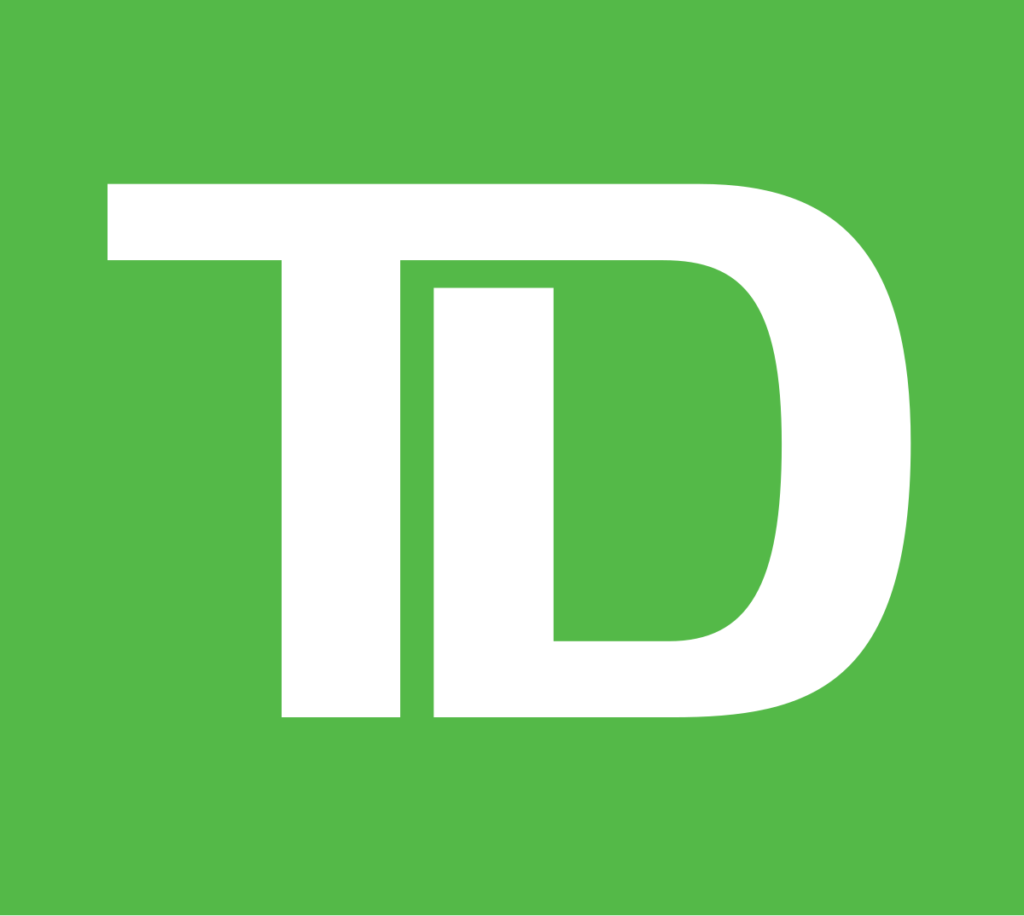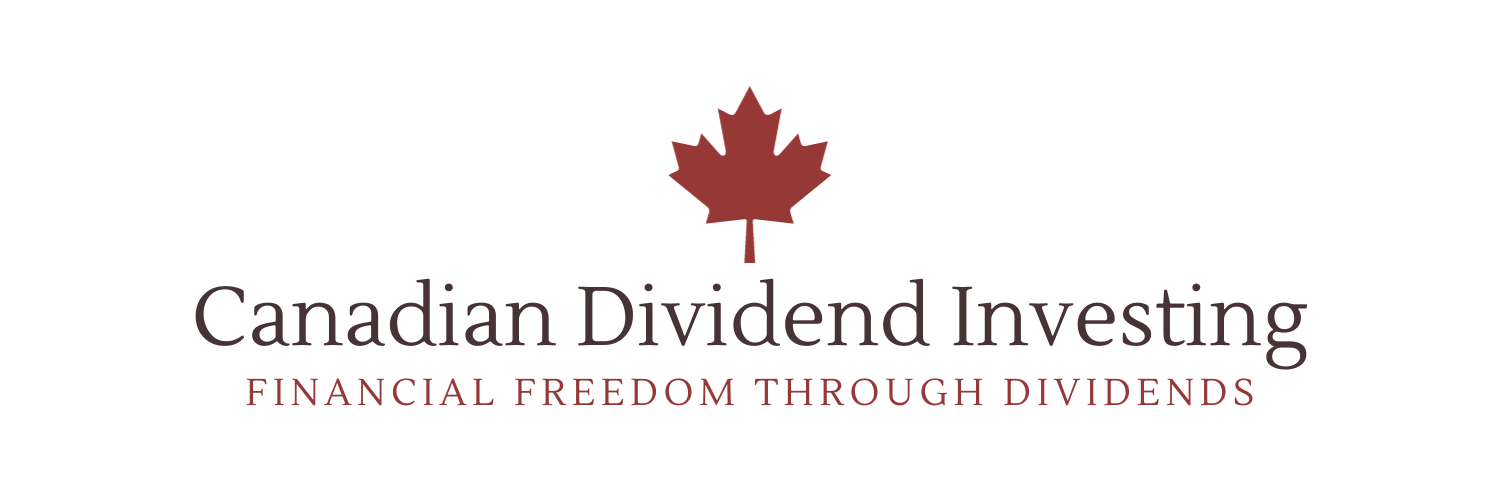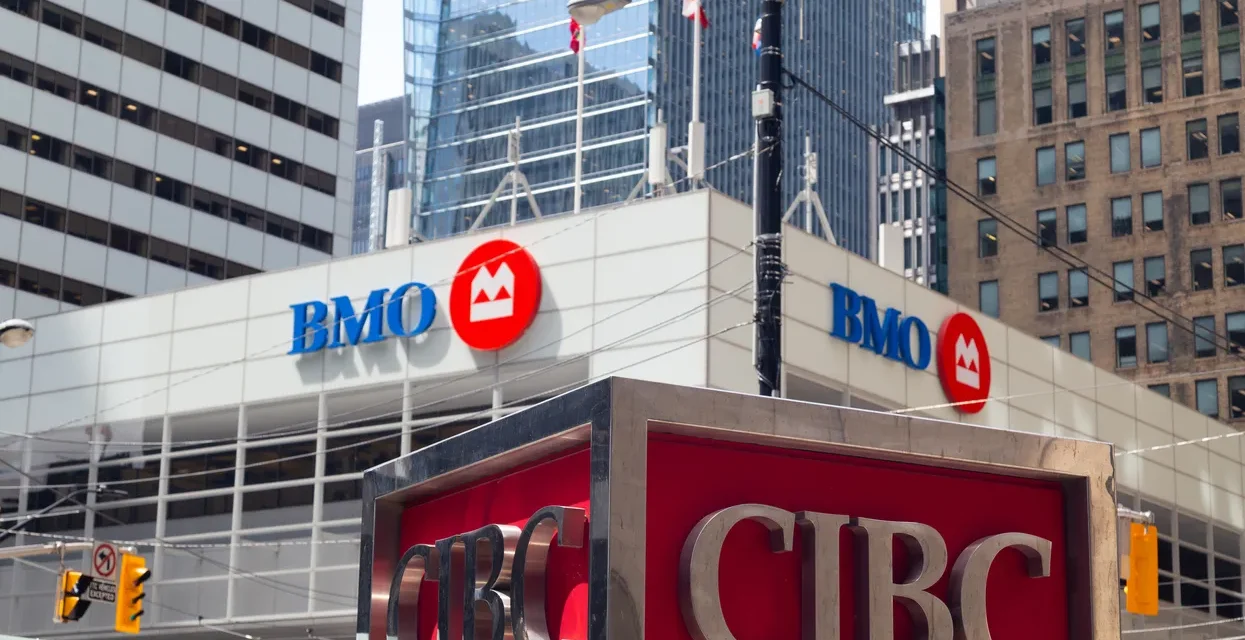Many dividend investors have loaded up on Canadian bank stocks, and it’s easy to see why, too.
Canada’s banks have been dividend stalwarts for decades now, paying steadily increasing income to their shareholders while delivering solid total returns. Over the last 20 years, each of Canada’s six-largest banks have consistently delivered total returns of more than 9% per year. Some performed better from 2004 to 2014, while others outperformed more recently.
Many investors have sworn off bank stocks, pointing to things like recent regional bank scares in the United States, lackluster recent returns for European banks, or the sector plain underperforming compared to sexy tech stocks. The consensus opinion seems to be that banking is a crummy business with no moat. All it takes to get in is money, so inevitably somebody shows up and does something stupid.
I’ll admit that argument has some legs in a place like the United States, where banking is a fragmented industry with thousands of competitors. But as experienced Canadian investors know, banking is a much better business north of the border. Canadian bankers are disciplined, prudent, and they’ve handled dozens of downturns, panics, and recessions with barely a hiccup.
This article will further discuss Canadian bank stocks, ranking the six largest banks in the country. However, before we get to it, a few thoughts on what makes Canadian banking so special.
Related: Five great RRSP stocks for your 2024 contribution.
Why Canada’s banks?
If banking is such a crummy business in the United States or Europe, why is it such a good business in Canada?
It turns out there are a few things that make Canadian banks special. To begin with, the banking sector in Canada is basically a oligarchy, with the top six banks in the country boasting a market share of approximately 85%. Sure, the country has credit unions and regional banks and alternative lenders, but, for the most part, it’s controlled by six massive institutions. Just about every Canadian has some sort of banking relationship with at least one member of the big six.
Secondly, Canada’s mortgage market is unique. The riskiest mortgages — those with 20% down or less — are saddled with mandatory mortgage default insurance. The borrower pays for this insurance and the Canadian government is the underwriter. If the mortgage goes south, the lender recovers any loss from the insurer. That’s a fantastic arrangement for the lender and ultimately bank shareholders, who reap the rewards.
Return on equity (ROE) is the key metric bank analysts use to gauge a bank’s profitability. Canadian bank stocks consistently post a higher ROE than their worldwide peers, meaning they’re more profitable on a per dollar of equity basis. This excess profit goes back to investors in the form of generous dividends, while also used to expand operations. Most of Canada’s largest banks have used their excess Canadian profits to buy assets abroad, typically in the United States.
These factors all combine to make Canadian banking a pretty solid business. This inevitably leads to good long-term stock returns which, to be frank, is the real reason Canadian investors love their bank stocks so much.
Now let’s take a closer look at each bank in general, ranked from my least favourite to my favourite.

Top Canadian bank stocks
A quick note before we get into it. Canada has several bank stocks that haven’t made this list. It focuses on the largest banks in the country, not the smaller ones. We’ll cover these alternate banks in other places on the site in the future. Stay tuned!
6. Bank of Montreal

Bank of Montreal (TSX:BMO) is the oldest bank among Canada’s largest, with operations dating all the way back to 1817. It was Canada’s central bank up until 1935, when it was replaced by the Bank of Canada. The company’s current focus is expanding its U.S. operations, where it has operated since 1984 after acquiring Harris Bank. It is the 8th largest bank in North America by assets, with approximately $1.3T under its umbrella. It also has some 13M customers globally and operates under three divisions — Personal & Commercial Banking, Wealth Management, and Capital Markets.
BMO also has the longest dividend history of its peers, paying uninterrupted dividends since 1829. Just a few more years and it’ll hit the two century mark. Needless to say, that’s a pretty damn impressive achievement.
The company recently made a big deal in the United States, buying San Francisco-based Bank of the West. This vaulted the company to becoming one of the 10 largest banks in the United States. Total revenue from the United States is now 41% of all revenue, making BMO the Canadian bank with the largest share of U.S. revenue.
Unfortunately, the market doesn’t love all the U.S. exposure, and I tend to agree. U.S. banking is a much tougher business, especially when we compare it to Canada. Analysts accused BMO of paying too much for its new asset, which will depress any potential earnings growth — especially if we enter a recession in 2024.
Ultimately, BMO is a little bit like the vanilla ice cream of Canadian banks. It has pretty good Canadian operations and okay U.S. assets. Its wealth management and capital markets divisions are solid, too. But there isn’t anything here that will really excite investors. Combine that with U.S. banking being a little underappreciated right now, and I just don’t see 2024 being a great year for BMO shareholders.
Saying that, even though I’m somewhat bearish for the rest of 2024, BMO should be a fine long-term investment. Being the worst Canadian bank is like being the ugliest contestant in bikini contest. BMO is an attractive investment when compared to the median TSX-listed company, it’s just slightly less attractive when it’s in the company of a bunch of beautiful stocks.
5. Scotiabank

Bank of Nova Scotia (TSX:BNS) can trace its history all the way back to 1831 when a group of Halifax businessmen created a public bank as an alternative to the privately held Halifax Banking Company. It expanded beyond Nova Scotia in the 1870s and had branches in every province by the early 1900s. The company continued growing outside of Canada, especially into Latin America. These days, Scotiabank has a large presence in Chile, Peru, Colombia, Mexico, and other Latin American and Caribbean countries.
When Scotiabank first expanded into Latin America, investors cheered. These were fast-growing economies with potential to add millions of new middle class clients. Unfortunately, these places haven’t exactly lived up to the hype. Investors choose to focus on political uncertainty and other issues, rather than look at economic growth.
Investor interest in the region started to wane, which depressed Scotiabank shares. The Latin American expansion turned from a positive development to a negative one, which caused shares to decline. Scotiabank is the worst-performing big six bank stock in Canada over the last decade.
The company is very aware of this, and new CEO Scott Thompson recently came out with a plan to right the proverbial ship. The big part of the plan is selling most of the Latin American assets, focusing the company’s resources on Canada, the United States, and Mexico. The hope is this new focus will increase Scotiabank’s ROE, which has lagged competitors’ for years now.
Your author is generally a fan of this plan; however, it’s unlikely Scotiabank will see any tangible results from it until at least 2025. It doesn’t want to fire assets out the door simply to get rid of them. It’s a long-term turnaround plan, and it’ll need more than a year to really show results. Long-term I’m bullish. I like the turnaround plan. Over the near-term, however, Scotiabank shares could be a little rocky.
4. Canadian Imperial Bank of Commerce

Up next in our ranking of Canadian bank stocks is Canadian Imperial Bank of Commerce (TSX:CM), which was established as the Canadian Bank of Commerce in 1867. It eventually merged with the Imperial Bank of Canada, forming CIBC in 1961. For years, CIBC frustrated investors by not expanding outside of Canada, which it finally rectified in 2017 when it spent $5B to acquire PrivateBancorp in the United States.
These days, approximately 65% of the bank’s earnings come from its Canadian operations, with an additional 18% coming from the U.S. and another 18% coming from other regions, especially the Caribbean. That diversification is a plus. The big negative is the market is convinced CIBC paid too much for its U.S. assets, much like the market is convinced BMO paid too much for its U.S. assets.
CIBC has also been focusing on wealth management, with approximately 35% of its earnings coming from its various wealth management businesses in North America. Wealth management is a competitive business and while CIBC has made progress there, the market is generally a little disappointed. Combine that with lackluster Canadian banking results, and it combines to give CIBC one of the lowest P/E ratios and highest dividend yields in the sector, confirmation investors aren’t super excited about the business.
Still, there are reasons to get excited here. The stock is currently weighed down by a general bearishness towards banks. The low P/E and high dividend yield have traditionally been signs of a good entry point. The company’s ROE is temporarily depressed, but it should recover in 2024 or 2025 at around 15%. It projects 7-10% annual earnings per share growth and has the history of similar growth to back up that prediction. And immigration into Canada should continue to boost domestic results.
CIBC is generally a pretty good bank that should see results continue to improve over the medium-term. And unlike Scotiabank, it doesn’t have a big turnaround plan to get through. The succulent dividend — the yield as I type this is nearly 6% — is a nice consolation prize as you wait, too.
Join our free newsletter. Great Canadian investing content in your inbox, each and every Sunday.
3. TD Bank

Toronto-Dominion Bank (TSX:TD) was first established as the Bank of Toronto in 1855. It merged with the Dominion Bank in 1955, creating a financial institution with 499 branches and a combined 5,500 employees. It continued to expand across Canada and into the United States, with landmark acquisitions including acquiring Canada Trust (2000) and expanding into the United States starting in 2005.
Like the rest of the banks on this list, TD has paid uninterrupted dividends for more than 100 years.
In 2022, TD announced yet another acquisition in the United States, agreeing to spend US$13.4B to acquire First Horizon. The deal was eventually called off amid pressure from U.S. banking regulators, with rumors circling that TD’s handling of certain money laundering issues is what led to the deal being scuttled. TD told investors the deal was dead because there was no clarity on if or when it would get regulatory approval.
Investors naturally assumed the worst, and TD shares have underperformed peers since the deal was called off.
But it’s not all bad news for TD. It’s one of the better banks in North America, earning praise for operations on both sides of the border. It has delivered better growth and more attractive ROEs over the long-term when compared to peers like BMO or CIBC. It also has a substantial investment in Charles Schwab, taking stock after it acquired TD Ameritrade assets in the U.S. Finally, the company is the largest institutional money manager in Canada, surpassing CIBC which has focused on that business for years.
Put it all together and TD has an enviable collection of assets.
Management is also taking advantage of the weak share price, using the cash it raised to buy First Horizon to aggressively repurchase shares in 2023. It’s been a long time since a Canadian bank pursued such a strategy, and this analyst thinks now is a great time to buy. This is a move that should pay off over the long-term.
2. Royal Bank of Canada

Up next in our ranking of top Canadian bank stocks is Royal Bank of Canada (TSX:RY), Canada’s largest bank. It started in Halifax in the 1860s and paid its first dividend to shareholders in 1870. It began as the Merchant’s Bank of Halifax, and embraced a slow growth path for its first 30 years. The company then changed its name to Royal Bank and accelerated growth from 1900 to 1930, becoming the largest bank in the country by the Great Depression. It then expanded into new areas like the United States and Caribbean.
These days, Royal Bank has a #1 or #2 market share in all key product categories in Canadian banking. It has more than 17M global clients and has become a top-15 global bank ranked by assets. It truly is a behemoth.
Royal Bank’s revenue mix is approximately 60% from Canada and 40% from its international operations. It has strong U.S. operations, but is also the bank of choice in many Caribbean countries, including the Bahamas, Barbados, and Cayman Islands. The company is well known as a good operator in both its capital markets and wealth management divisions. It has even become one of Canada’s largest insurance companies, a subsidiary responsible for only 5% of its earnings.
The company also has a demonstrated history of strong returns on equity, with three and five-year averages of adjusted ROEs above 16%. It has grown book value by more than 10% annually over the long-term, an impressive feat when you’ve been the country’s largest bank for almost a century. Royal has shared the wealth with its shareholders too, increasing dividends by an average of 8% annually over the last decade.
Put it all together, and Royal Bank isn’t just Canada’s largest bank. It’s also the nation’s most trusted, by both customers and investors. That’s an enivable position, and it’s a big reason why RBC has delivered better than average return for decades now.
But, as good as Royal Bank is, it can’t offer the same compelling story as our top Canadian bank stock for 2024.
1. National Bank of Canada

National Bank of Canada (TSX:NA) is the smallest company on this list, and one of the youngest. It was founded in 1859 but didn’t emerge in its current form until 1979 when Banque Canadienne Nationale merged with The Provincial Bank of Canada. It is currently the sixth-largest commercial bank in Canada and although it has branches and operates in all Canadian provinces, it is largely an Eastern Canadian bank. Most of its assets are in Ontario and Quebec.
There are a few important factors that separate National Bank from its peers. We’ll start first with the Canadian exposure. As mentioned earlier, Canadian banking is a good business. It delivers consistently better returns than U.S. or Latin American banking. National Bank has approximately 90% of its assets in Canada. This focus on Canada ensures National Bank delivers better ROEs than its peers.
National Bank does have a small international division. It owns 90% of the largest bank in Cambodia, an asset which is growing nicely and has a great efficiency ratio.
Overall, the company has delivered better growth than its peers. This is partly because it’s smaller than the rest, and partly because it still has easy expansion paths inside Canada. Combine that with a consistently higher ROE and you have a winner. In fact, National Bank has delivered the best returns of its peer group over the last 20 years.
It also has a great dividend and below average payout ratio. The current yield is 4.1% and the payout ratio is 41% of 2023’s earnings. National’s peers, meanwhile, have an average payout ratio closer to 50% of earnings. This ensures a dividend that is safer than peers.
Put it all together, and I see one of the best Canadian bank stocks that looks poised to deliver solid returns in 2024 and beyond.
A few final notes on Canadian bank stocks
Canadian banking is a good business, and our banks have delivered great long-term returns. Even the worst stock on this list is still a solid investment.
In fact, your author holds all six banks listed here. I consider all six core positions, too. I’m not in any hurry to sell BMO because I think it’s slightly worse than Scotiabank.
I’ve long embraced a simple Canadian bank stock strategy. I just own all six. I then overweight what I think are the best ones.
For example, a model bank portfolio might look like this:
- 2.5% weighting for Royal Bank
- 2.5% weighting for National Bank
- 2% weighting for TD Bank
- 2% weighting for CIBC
- 1.5% weighting for Scotiabank
- 1.5% weighting for BMO
Your portfolio may differ. And we haven’t even discussed alternative banks like Quebec-based Laurentian Bank (TSX:LB), or quick-growing EQ Bank (TSX:EQB). They might deserve a spot in your portfolio too.
Overall, it’s hard not to like Canadian bank stocks — even the ones lower down on this list. The benefit from oligarchy status, the backing of the federal government, and massive investor trust. They’re stalwarts in millions of portfolios around the world, great businesses that are poised to continue their dominance for decades to come. Tuck them away for the long-term. Your future self will thank you.





